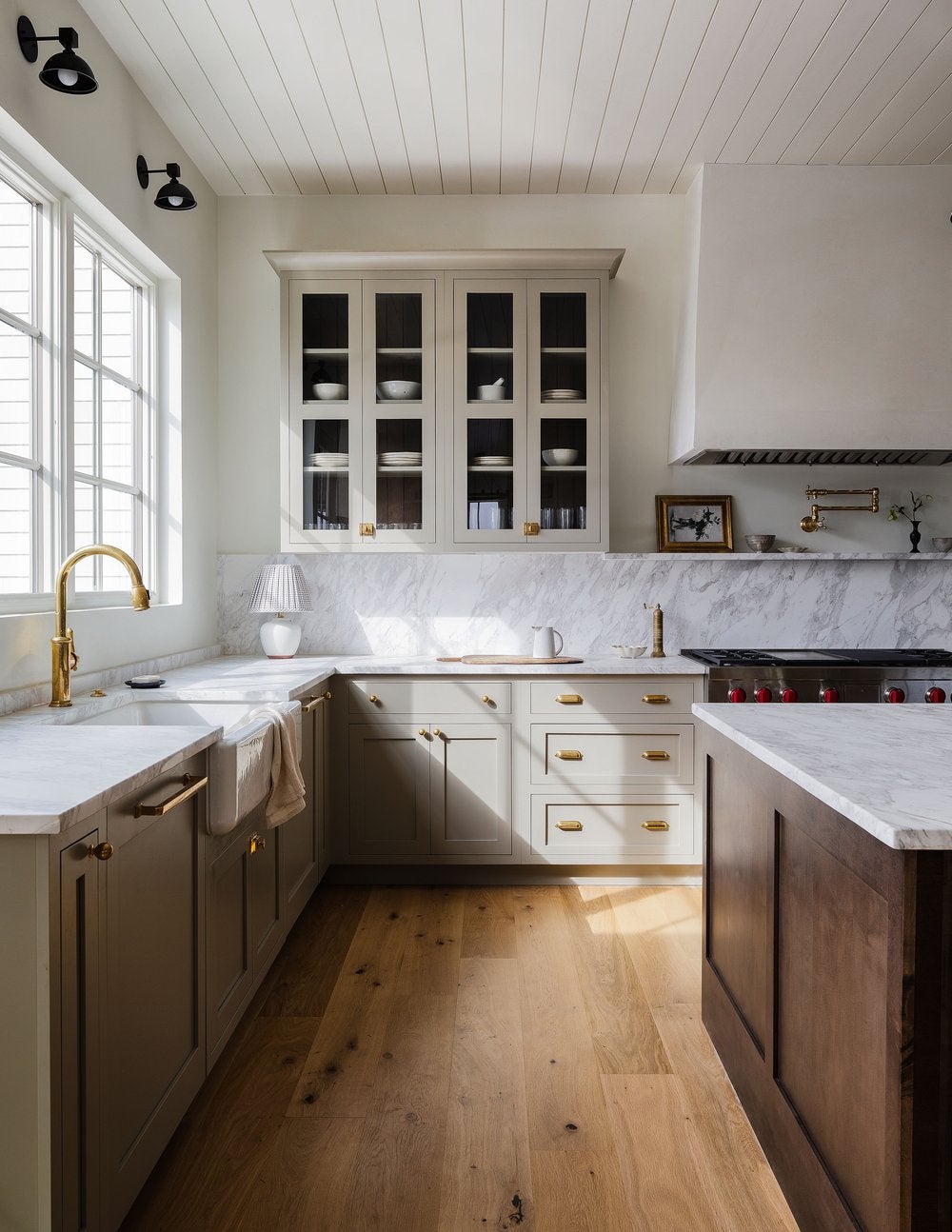It’s inevitable: At one point or another, a project will go over budget—especially now, with rising costs due to the ever-changing tariff policies. This week, we asked six designers—Kristin Harrison, Kelsey Haywood, Yena Jung, Dina Marciano, Michelle Murphy and Jennifer Press—how they get thrifty when a client’s budget hits its limit.

Be Resourceful
“When it comes to being mindful of budget, there are some great ways to save in secondary bathrooms. People may cringe when I say that, but there are so many materials and options now that it’s much easier to create beauty on a tighter budget. Additionally, finding [stone] remnants for counters instead of full slabs can really help keep the cost down in many areas throughout the home!” —Kristin Harrison, Georgia & Hunt Design House, McLean, Virginia

Billing Strategy
“A goal of mine is instilling confidence in the team so those with a lower bill rate are able to own pieces of the project. That way, I’m not unnecessarily billing at the highest rate when I could use it as a stretch opportunity for a team member. It’s an ever-evolving part of having a team, and it’s the first lever I pull when we are going over budget. When a team member is billing at a lower rate, even if it’s taking longer, the cost will still be lower than if it was billed at my rate, and saves us on the design-time cost during the project.” —Kelsey Haywood, Haywoodmade Interiors, Chicago

High-Low
“‘You can have everything, but not everywhere.’ That’s what I remind my clients. Not every design element has to be high-end luxury. Keeping an open mind to what brands, styles, textures and materials are used is a great way to pair high and low. Even the different suppliers we source from can greatly impact the client’s budget. Especially now, just staying up to date on the cost trends of imported goods and knowing where to source can save our client’s budget. [It’s about] finding the right substitution, [like] a light fixture that can be less expensive, knowing that once it is installed, you never touch it again; or deciding that marble tiles are a must in the bathrooms, but choosing to only use them in the shower or on the floor. Sometimes compromises must be made to keep the overall integrity of the design intact. Every amount saved can have a significant impact on the overall budget.” —Yena Jung, By Yena Designs, New York

Prioritize and Repurpose
“First, prioritize high-impact areas—splurge on statement pieces like lighting or upholstery while opting for budget-friendly alternatives on accessories. Consider mixing high and low by pairing custom furniture with well-made retail pieces. Repurposing existing furnishings with new upholstery or refinishing can refresh a space at a fraction of the cost. Finally, phase the project in stages, focusing on essentials first and adding finishing touches over time to maintain financial flexibility.” —Michelle Murphy, Demi Ryan, Chapel Hill, North Carolina

Easy Trick
“Find a receiver in a state with lower sales tax. For example, if your client is based in New York, you can use a receiver in New Jersey and save a little bit on the sales tax. It doesn’t make a huge difference, but every little bit helps when already over budget! Other ways [to save include] knowing your vendors. Lots of vendors sell the same product, and knowing which ones have the most competitive pricing helps immensely.” —Jennifer Press, Press Interiors, New York

Get Creative
“When budgets get tight, I see it as a chance to get creative. I prioritize key design elements and explore cost-effective alternatives for other aspects. Repurposing existing items can add a unique charm to a space while saving costs. Building strong vendor relationships also allows me to negotiate better deals and consider bulk purchasing options, ensuring I deliver quality designs without breaking the bank.” —Dina Marciano, Dina Marciano Design, Laguna Beach, California





























